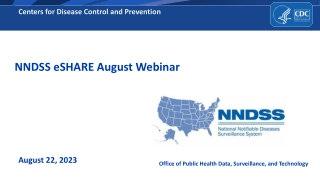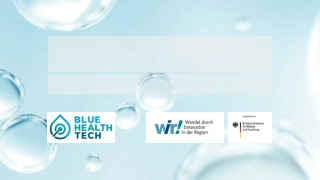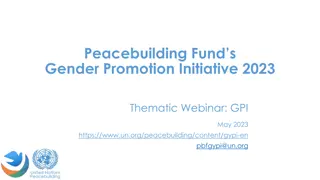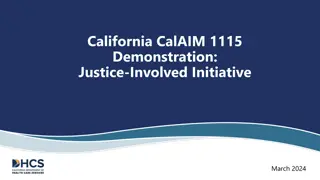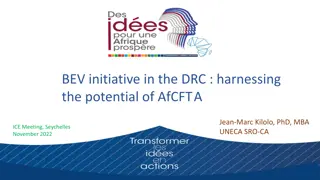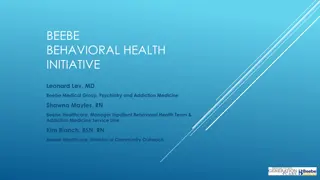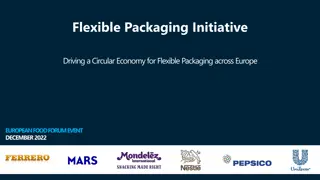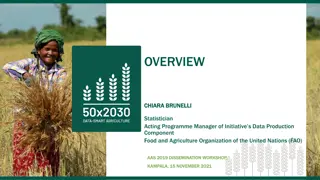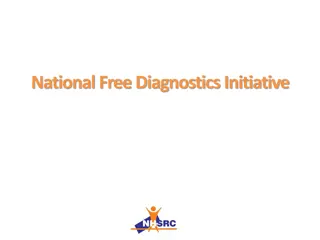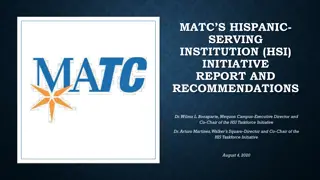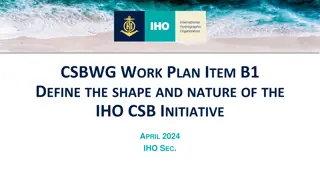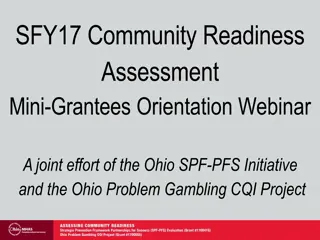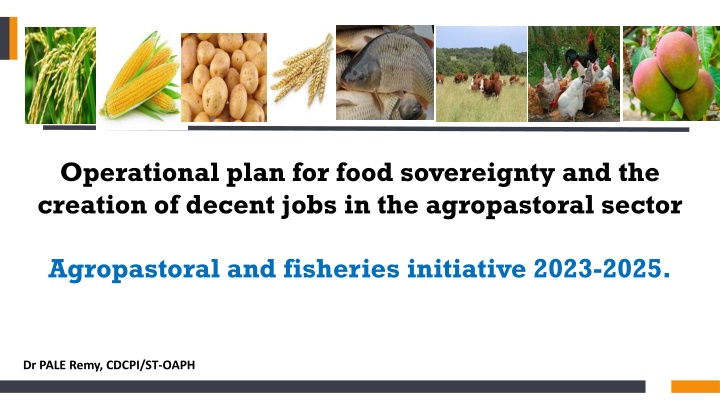
Ambitious Operational Plan for Food Sovereignty and Job Creation in Agropastoral Sector 2023-2025
This operational plan outlines ambitious goals for achieving food sovereignty and creating jobs in the agropastoral sector in Burkina Faso from 2023 to 2025. With a focus on key strategic sectors like rice, corn, potatoes, wheat, fish, livestock, poultry, and mango, the plan aims to enhance agricultural productivity, rebuild livelihoods of vulnerable households, and address food insecurity challenges in the country.
Download Presentation

Please find below an Image/Link to download the presentation.
The content on the website is provided AS IS for your information and personal use only. It may not be sold, licensed, or shared on other websites without obtaining consent from the author. If you encounter any issues during the download, it is possible that the publisher has removed the file from their server.
You are allowed to download the files provided on this website for personal or commercial use, subject to the condition that they are used lawfully. All files are the property of their respective owners.
The content on the website is provided AS IS for your information and personal use only. It may not be sold, licensed, or shared on other websites without obtaining consent from the author.
E N D
Presentation Transcript
Operational plan for food sovereignty and the creation of decent jobs in the agropastoral sector Agropastoral and fisheries initiative 2023-2025. Dr PALE Remy, CDCPI/ST-OAPH
Plan Background and rationale 01 Ambition and objectives 02 03 04 05 06 Global intervention logic Cost and implementation mechanism Necessary reforms Impacts and implementation
I. Background The agricultural policies What priority actions and reforms are needed to exploit the country's natural potential? shortcomings of our Humanitarian situation continues to deteriorate With what resources and how can they be mobilized effective intervention? to ensure Existence of strong agro-pastoral potential... Ambition of high authorities to achieve food sovereignty in Burkina Faso.
II. Ambition and objectives Adoption of the Operational Plan for Food Sovereignty and the Creation of Decent Jobs in the Agropastoral Sector (Plan Op rationnel pour la souverainet alimentaire et la cr ation d'emplois d cents dans le secteur agropastoral) for 2025 on August 30,2023 This plan, entitled "Offensive Agropastorale et Halieutique 2023-2025", represents a vision and a commitment to instill a dynamic of structural transformation in agriculture, while helping to rebuild the livelihoods of vulnerable households. The primary ambition of the Offensive Agropastorale et Halieutique 2023-2025 (OAPH) is to achieve food sovereignty for the country by 2025, focusing on 8 strategic sectors: rice, corn,potatoes,wheat,fish,livestock/meat,poultry and mango.
II. Ambition and objectives The OAPH plans to : Annual production 1,000,000 tonnes of paddy rice to cover 100% of consumption needs through the development of 10,000 ha of irrigated perimeters and 30,000 ha of lowlands; 2,000,000 tonnes of corn to cover the consumption needs of people and poultry, but also to supply the agri-food industries 600,000 tonnes of potatoes to cover all import requirements 18,000,000 head of poultry ; Produce one hundred thousand (100,000) tons of fish to meet 50% of consumption needs;
II. Ambition and objectives The OAPH plans to : Rebuild the livestock stocks of 20,000 vulnerable farmers through the distribution of breeding nuclei of small ruminants and cattle feed; Renew 15% of mango orchards, i.e. 5,000 hectares, with 2,000,000 more productive plants, supported by irrigation systems; Create 2 modern reference pastoral zones in West Africa at Doubegu -Tchierbo in the Centre- Est region and Sondr -Est in the Centre-Sud region; Boost national wheat production by developing 1,500 hectares of irrigated land.
III. Overall intervention logic 4 SEPB Banks/IMFs - 10,000 young people & VDP - 6 private developers - 30,000 small producers - 250 orchard owners - 418 producers of P. T CUMA and BUMIGEB 6 12 CAIMA etc. Guichet-FDA 5 7' 10 7 Rice: 1,000,000 T - 10,000 ha of perimeter - 30,000 ha of lowlands - 250 high-flow boreholes - 5,000 ha of mangoes - 1,500 ha of wheat - 1,200 ha of potatoes 2 Corn: 2,000,000 T 8 Condition: Potatoes: 58,000 T 3 Agro-Industrial - Projects and programs Wheat: 6,200 Tons 9 2 Retailers Mango: 5,000 ha - Budget 1 11 Institutional buyers - APEC, FDI Fish: 100,000 Tons - 50,000 poultry kits - 20,000 Small ruminant kits - 21,000 floating fish cages - 2 Modern pastoral zones 9 Chicken: 18,000,000 head 2 - 50,000 poultry farmers - 200 poultry farms - 210 Fish farmers Mod - 20,000 PR breeders Agro-Industrial Eggs: 85,000,000 units 8 3 144,000 small ruminants 26,000 ha of pastureland 10 Stock gross Coop 7 5 12 DGRH, CAMVET & CPAVI Guichet-FODEL 6 Semi-finished stock Banks/IMFs 4 Production Marketing Transformation
IV. Cost and implementation mechanism Products Rice Corn Mango Potatoes Wheat Fish Poultry Meat cattle TOTAL Total budget 309 832 915 010 69 761 139 853 18 134 812 500 3 009 795 097 24 354 290 502 103 814 137 934 40 205 625 000 23 677 176 667 592 789 892 564 Private investment 93 654 295 999 51 931 879 523 17 692 500 000 1 504 897 549 23 532 966 666 101 282 085 789 21 412 500 000 6 850 833 333 317 861 958 859 Public investment 216 178 619 011 17 829 260 330 442 312 500 1 504 897 549 821 323 837 2 532 052 145 18 793 125 000 16 826 343 333 274 927 933 705 Multi-annual programming gives 16% of the investment budget in 2023, compared with 47% and 37% in 2024 and 2025 respectively.
IV. Cost and implementation mechanism The public funding to be mobilized represents 46% of the total amount. Public resources will be mobilized by reallocating or restructuring the budgetary appropriations for the projects concerned. 173 billion FCFA (public funding) 317 billion, or 54% of the total amount to be raised from private players. This leaves a public financing requirement of CFA 101 billion.
V. Necessary reforms The creation of a single fund, the Fonds de D veloppement Agropastoral (FDAP), with three branches: one for animal resources, one for fisheries resources and one for crop and fruit production; the extension of the scope of agropastoral insurance to the eight products included in the initiative; the introduction of a quota for the purchase of domestic rice and fish by importers; facilitating agricultural cooperatives' access to institutional food purchases through a contract farming mechanism. the adoption of specific derogation measures for PPPs and public procurement procedures the adoption of an alternative mechanism for managing the land purge at the Samendeni and Bagr sites; the adoption of innovative approaches to mobilizing financial resources and the reorganization of development projects and programs to close the public financing gap, estimated at 101 billion CFAfrancs.
VI. Impacts and implementation Additional annual production: 10.85% increase in agricultural GDP and 4.85% increase in overall GDP. 647,500 tonnes of rice, Rural therefore rise by 8.6%,compared with 4.5% for urban households. household incomes will 270,000 tonnes of corn 33,400 tons of potatoes, 6,200 tonnes of wheat the creation of at least 100,000 decent jobs in the agro-pastoral sector for young people, including IDPs and VDPs. 77,350 tonnes of merchant fish, 18,000,000 head of poultry 85,000,000 egg units 140,000 head of small ruminants.
VI. Impacts and implementation Implementation device: The offensive is implemented by MARAH's operational units, i.e. budget programs and decentralized technical departments. Coordination and monitoring/evaluation are under the leadership of a Technical Secretariat. A Steering Committee provides guidance and ensures that the necessary resources are mobilized. Complementary processes a framework for facilitating budget execution procedures similar to that of the Sahel Emergency Program (SEP) a digital web platform set up
Thank you for your attention!



